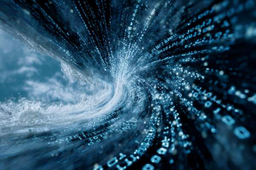Expert Commentary
Latest Articles
Tech
Logical Data Management and Data Products Deliver Data for Insurers
Paul Moxon | January 9, 2026
Paul Moxon looks at what's on the horizon and warns that insurers that fail to modernize how they harness data will fall behind.
Design and Professional Liability
Real Estate Agents' Floor Plan Replication Ruled Fair Use
Kenneth Slavens | January 9, 2026
Ken Slavens relates a case where the Eighth Circuit Court of Appeals held real estate agents did not infringe on a designer's copyright by using floor plans in marketing homes for sale.
Employment Practices
Prevention Data Is Reshaping EPL Risk Management
Justin Velten | January 7, 2026
Dr. Justin Velten discusses the early signals, reactive models, and development of a preventive mindset in employment practices liability (EPL) risk management and what this means for the insurance industry.
Construction Safety
Focus on the Next Generation of Construction Professionals
TJ Lyons | January 2, 2026
An often-overlooked part of a safety professional's job is molding their replacement. TJ Lyons looks at the process and benefits.
Risk Management
From Audit Scores to Proxy Indicators: Understanding Safety Metrics That Matter
Justin Morrow | December 19, 2025
Indicators are needed that track what people are doing today to know if the system will perform tomorrow. Justin Morrow explains.
Reinsurance
Special Termination Provisions in Reinsurance Contracts
Larry Schiffer | December 19, 2025
Larry Schiffer explores the special termination clause, its purpose, and how it has evolved.
Additional Insured Issues
The Additional Insured Labyrinth: Pleadings and the Duty to Defend
Julian Ehrlich | December 19, 2025
Confusion about additional insured coverage has driven a growing body of national coverage case law. Julian Ehrlich examines these issues.
Leadership at All Levels
Rewriting the Rules of Risk: Why Standing Still Is the Most Dangerous Move
Rose Hall | December 12, 2025
Rose Hall explains how "risk" is a necessary component of growth. This means changing the traditional mindset of the insurance industry itself.
Risk Management
Death by a Thousand Claims: Why Small Losses Can Cause Bankruptcy
Michael Reich | December 12, 2025
Michael Reich explains that good risk management goes beyond catastrophic and safety exposures to address smaller, higher-frequency loss events.
Tech
Negotiating MSAs, What to Look and Look Out For
Damon Ranieri | December 12, 2025
The Innovators' Circle takes a deep dive into master service agreements (MSAs), discussing various pricing models and offering some of its best takeaways.

Tech
Logical Data Management and Data Products Deliver Data for Insurers
Paul Moxon | January 9, 2026

Design and Professional Liability
Real Estate Agents' Floor Plan Replication Ruled Fair Use
Kenneth Slavens | January 9, 2026

Employment Practices
Prevention Data Is Reshaping EPL Risk Management
Justin Velten | January 7, 2026

Construction Safety
Focus on the Next Generation of Construction Professionals
TJ Lyons | January 2, 2026

Risk Management
From Audit Scores to Proxy Indicators: Understanding Safety Metrics That Matter
Justin Morrow | December 19, 2025

Reinsurance
Special Termination Provisions in Reinsurance Contracts
Larry Schiffer | December 19, 2025

Additional Insured Issues
The Additional Insured Labyrinth: Pleadings and the Duty to Defend
Julian Ehrlich | December 19, 2025

Leadership at All Levels
Rewriting the Rules of Risk: Why Standing Still Is the Most Dangerous Move
Rose Hall | December 12, 2025

Risk Management
Death by a Thousand Claims: Why Small Losses Can Cause Bankruptcy
Michael Reich | December 12, 2025












